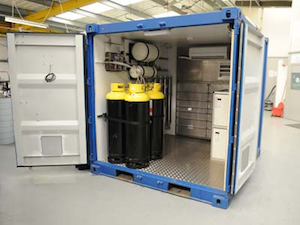From this morning’s Financial Times, calling for far greater public investment in clean R&D:
… According to academics from the University College London and the University of Oxford/Rutherford Appleton Laboratory some extremely promising clean technologies like ammonia are currently being overlooked …
“Because ammonia not only offers practical ways to tackle many of their articulated challenges but also has a profoundly important track record for enabling innovation at about the scale required. Ammonia is a genuine contender, perhaps the contender, for carbon-free energy that competes with fossil fuels …
“The sun provides roughly 5,000 times our global energy requirement and innovative uses of ammonia can open up greater access to that energy, with solutions that range from massive energy storage for grid-balancing intermittent renewable energy production to the zero-carbon provision of energy for transportation. Decriers will say that ammonia is not safe, but petrol, hydrogen and batteries all have their safety issues. And surely “safe ammonia” is an achievable challenge.
“Importantly, ammonia addresses all three neglected R&D areas that King and colleagues identify. It targets the base-load generation challenge for renewables, and, in addition to technology road mapping, can tackle the incentives and consequences that otherwise stop or delay good innovation.”
But really, at the end of the day, whether government and private enterprise work together or against each other, nothing may be more important than introducing some kind of competitive “arms race” factor into the scenario.
Consider in that regard not only the successes of the Manhattan Project and the Apollo missions, but also the human genome project, an international effort to sequence the human genome, which was completed much earlier than expected precisely because of the inadvertent oneupmanship sparked by a private-public race to the finish line.
The quote is from a group of British academics including Bill David, who contributed to two technical papers at the 2014 NH3 Fuel Conference (“Investigating and Understanding Ionic Ammine Materials” and “A novel approach to ammonia decomposition,” both available on this site).
Read the full FT article here.

 The prototype vehicle uses a fuel ratio of 70% ammonia to 30% gasoline to power a spark ignition engine. As ammonia contains no carbon, this fuel ratio results in a corresponding 70% reduction in carbon dioxide emissions, compared to pure gasoline.
The prototype vehicle uses a fuel ratio of 70% ammonia to 30% gasoline to power a spark ignition engine. As ammonia contains no carbon, this fuel ratio results in a corresponding 70% reduction in carbon dioxide emissions, compared to pure gasoline.

